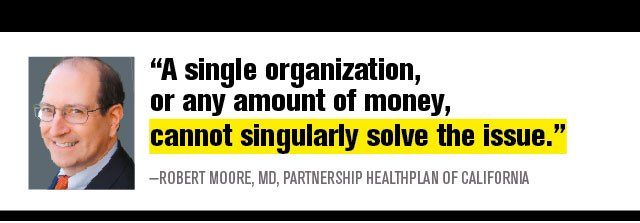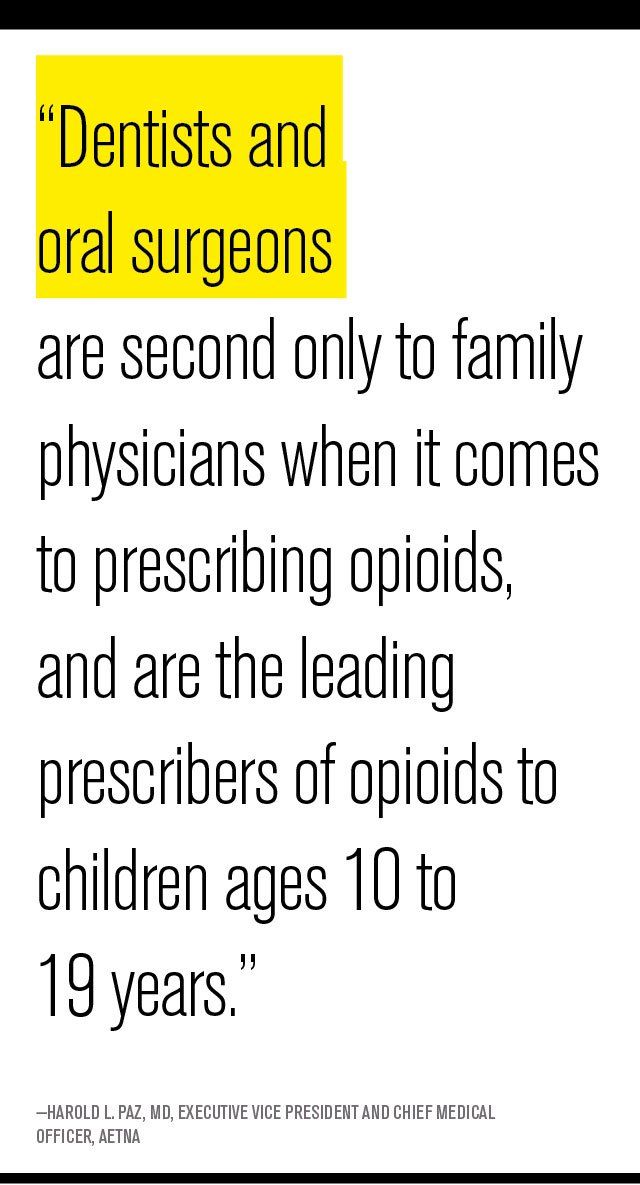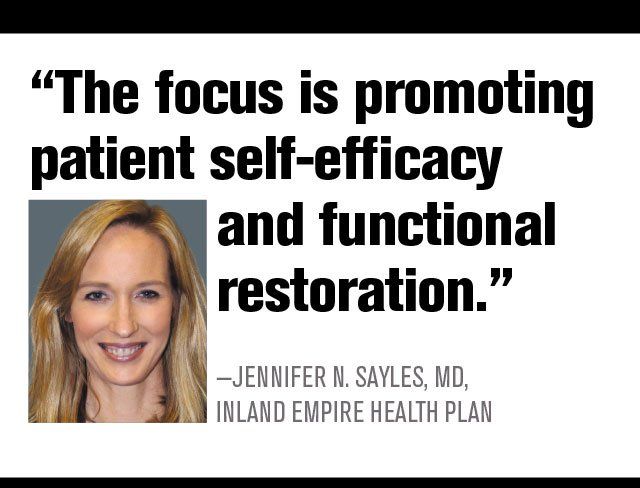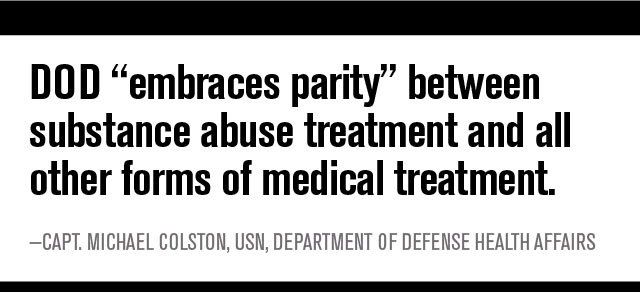Four health programs successfully fight the opioid epidemic
Shocking opioid overdose statistics make it crucial to address the epidemic. Here are four programs to watch
Drug overdose deaths and opioid-involved deaths continue to climb, according to the CDC. Ninety-one Americans die every day from an opioid overdose-that includes prescription opioids and heroin. Most drug overdose deaths (more than six out of 10) involve an opioid.
“The opioid epidemic, and the corresponding issue of overdose deaths, represents the largest public health crisis this nation has seen during most of the population’s lifetime-the swine flu outbreak about a century ago was the last epidemic to reach a similar scale,” says Capt. Michael Colston, USN, Office of Health Services Policy & Oversight, Department of Defense Health Affairs. The overdose epidemic caused more deaths in 2016, approximately 60,000, than HIV/AIDS, gun violence, suicide, or automobile accidents ever did at their corresponding peaks. Overdoses from the strongest synthetic opioids, such as fentanyl, have tripled, says Colston. Here are four programs that are making a difference:
1. Partnership HealthPlan of California’s managing pain safely (MPS) initiative
“The opioid epidemic has created a significant strain on the health of our communities as valuable resources are being shifted to address overdose and other health issues arising from unsafe prescribing,” says Robert Moore, MD, medical director of the managed care plan, which serves more than 570,000 individuals. “For us, we felt the severity of the issue necessitated that we act and take the first step in helping communities address the issue,” he says.

The MPS is firmly grounded in community involvement, says Moore. “The success of our plan has always been built on the relationships-partnerships-we have in the community with members, physicians, health centers, community organizations, and more. As we know, the opioid epidemic cannot be solved by a single entity,” he says.
The program includes cross-sector representation including providers and medical associations, law enforcement, and educational entities. “While this cross-sector approach is becoming more common in this opioid work, it was relatively new at the time of formation,” says Moore. “As we implemented our MPS program, we saw that the community coalitions that were the most successful had the most wide-ranging representations. Additionally, this comprehensive strategy has helped shift knowledge and norms within the prescribing community, and is working to do the same at the community level.”
Health plans are in the unique position to directly impact and guide provider prescribing habits, says Moore. “We leveraged changes in our formulary to help facilitate safer prescribing for our members,” he says, adding that they also updated prescriber guidelines. “MPS started with a goal to prevent escalating doses of opioids for patients already on high doses,” says Moore. “This has morphed into supporting clinicians in our network to think critically when prescribing opioids at any dose, and to support safe and appropriate prescribing.”
Since the initiative started, the organization experienced a 68% decrease in total opioid prescriptions from January 2014 to June 2017.
Next: "Super-prescribers" program
2. Aetna’s opioid “super-prescribers” programs
Aetna uses claims data to detect concerning patterns and provide education and actionable data to clinicians so that they can make more educated choices about opioids.

One of Aetna’s most unique initiatives launched in 2016, when it sent letters to nearly 1,000 doctors in various specialties who were identified as “super-prescribers,” or who prescribed opioids at higher rates than their peers. The letters informed physicians that they were in the top 1% of opioid prescribers. The goal was to start a dialogue about their prescribing habits.
In 2017, the company continued its outreach by sending letters to 480 super-prescriber dentists and 249 oral surgeons. “Dentists were considered super-prescribers if they wrote more than four prescriptions for more than a seven-day supply over the past two years, based on Aetna’s claims data,” says spokesperson Ethan Slavin. “Oral surgeons, who typically treat more severe conditions, were considered super-prescribers if they wrote more than five prescriptions for more than a seven-day supply over the past year.”
Since August 2016, Aetna has seen a 7% reduction in monthly opioid prescriptions among its commercial pharmacy membership, and a 5% reduction in monthly opioid prescriptions among its Medicare Advantage pharmacy membership.
“The decrease in prescriptions are a result of several companywide efforts (including the ‘super-prescriber’ programs) to fight the opioid epidemic in the United States,” Slavin says. Other efforts include Aetna’s commitment to addressing prescription drug fraud and overprescribing, supporting e-prescribing for controlled substances, strengthening prescription drug monitoring programs, and studying best practices.
“Aetna is using its considerable data resources to help clinicians understand how their prescribing patterns compare to their peers and to established guidelines,” Slavin says. “This will enable them to reduce misuse and abuse and prevent the diversion of unused pills, which represents a major driver of the opioid epidemic.”
Next: Total Pain Care Program
3. Inland Empire Health Plan’s Total Pain Care program
Inland Empire Health Plan (IEHP) in California, a not-for-profit Medicaid and Medicare managed care plan, experiences high numbers of prior authorizations for opioids, and many of its customer service calls, grievances, and complaints are pain-management related.

IEHP’s Total Pain Care program focuses on a broad-spectrum pain management strategy. Instead of simply restricting the use of opioids, the health plan works with providers and community partners, says Bradley P. Gilbert, MD, chief executive officer.
One example is IEHP’s partnership with a multidisciplinary pain program offered by the Desert Clinic Pain Institute (DCPI), which provides a focused, comprehensive approach for chronic pain sufferers who are on high doses of opioids.
Approximately 1,000 IEHP members have been enrolled in the DCPI center of excellence program since 2015. In addition to chronic pain and opioid use, they often have a psychiatric illness or symptoms. Most are at high risk of hospitalizations and/or death from opioid overdose.
“It’s a 12-month [fully covered by IEHP], evidence-based program that uses medical treatment, behavioral therapy, physical reconditioning, and education,” says Jennifer N. Sayles, MD, IEHP’s chief medical officer. “Patients may receive individual or group cognitive therapy, restorative medicine and conditioning, and alternative therapies such as yoga, mindfulness, massage, acupuncture, and other treatment modalities. The focus is promoting patient self-efficacy and functional restoration.”
Patients report statistically significant decreases in perception of pain intensity and interference, significant improvement in their Pain Disability Index measures, and decreases in depression symptoms as measured by Patient Health Questionnaire scores, Sayles says. IEHP has also seen improved member satisfaction and reports of improved quality of life.
The key to making an impact on the opioid crisis is coordinating with carve-out and community services, Gilbert says. “Health plans also need to engage with their members before and during treatment. Transitional support programs help ensure successful outcomes for members after they’ve completed the DCPI program.”
Next: DoD opioid reduction program
4. U.S. Department of Defense (DoD) opioid reduction program
DoD’s opioid reduction program focuses on reducing demand, treatment, and overdoses. “Demand reduction is accomplished by a strong drug testing program, interdiction efforts with law enforcement, prescription drug monitoring programs, and policies that limit types and amounts of opiate drugs that may be dispensed,” says Capt. Michael Colston, USN, Office of Health Services Policy & Oversight, Department of Defense (DoD) Health Affairs.

DoD requires all opioid providers to complete DoD-specific training that guides them to consider when it is most appropriate to use opioids for pain, and when other treatment approaches are best. “DoD embraces parity between substance abuse treatment and all other forms of medical treatment,” Colston says. “To that end, inpatient beds, medication-assisted treatment, and intensive outpatient treatment capability have been increased.”
DoD has a long-standing random urinalysis program for all uniformed service members, Colston says, noting that three years ago, its drug testing panel was expanded to cover additional opiate metabolites. “Positive screens remain well below 1%,” he says.
DoD’s overdose death rate (2.7/100,000) is one fourth of the national rate (10.4/100,000), according to Colston. “Even after demographic corrections-DoD is younger and more male than the general population-the rate is less than half the civilian rate,” he says.
David Calabrese of OptumRx Talks New Role, Market Insulin Prices and Other Topics 'On His Mind'
April 13th 2023In this month’s episode of the "What's On Your Mind podcast," Peter Wehrwein, managing editor of MHE connects with the now Chief Clinical Officer of OptumRx Integrated Pharmacies, David Calabrese. In this conversation, David touches on his transition in January as OptumRx’s former chief pharmacy officer and market president of health plans and PBMs to his new role as Chief Clinical Officer where he now focuses more on things such as specialty pharmacy to home delivery — with an overall goal of creating whole-patient care. Throughout the conversation, Calabrese also touched on the market’s hot topic of insulin prices and behavioral health services within the OptumRx community, among other topics.
Listen
Briana Contreras, editor of Managed Healthcare Executive, spoke with Nancy Lurker, CEO and president of EyePoint Pharmaceuticals. Nancy shared a bit about EyePoint and how the organization’s innovative therapies are addressing patient needs through eye care, and most importantly, she addressed C-Suite positions like the CEO role. Nancy shared advice for those seeking to reach the CEO level, especially toward women in healthcare and other roles, and what it takes to run a biopharma company.
Listen